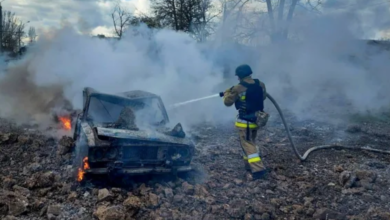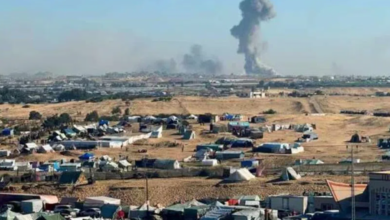Day after record-high temperature, Italian glacier collapse leaves eight dead and 14 missing

At least eight people were injured and another 14 were reported missing after a huge chunk of Italy’s biggest Alpine glacier on Marmolada mountain collapsed on Sunday.
Ice and rock thundered down Marmolada, the highest mountain in the Italian Dolomites, at 300 kilometres an hour (185 miles per hour), according to the head of Trento province, Maurizio Fugatti. However, what caused a pinnacle of the glacier to break off and thunder down the slope wasn’t immediately known.
Find Out What Equity Release Can Offer You Today

The disaster struck a day after a record-high temperature of 10 degrees Celsius (50 degrees Fahrenheit) was recorded at the summit of the glacier, the largest in the Italian Alps.
Rescue operations
Thunderstorms hampered Monday the search operations to a large extent. Rescuers used thermal drones to seek heat from potential survivors, although chances of finding them were “slim to nothing”, the region’s Alpine Rescue Service head Giorgio Gajer told AGI news agency. The bodies recovered so far were found “torn apart”, rescuer Gino Comelli said.
“I heard a roar, I turned to my left and saw a mass of ice coming down from the mountain,” ski instructor Luca Medici, 54, told AFP. Bodies dug out of the ice and rock were taken to the village of Canazei.
A physical search of the disaster scene was impossible on Monday due to fears the glacier may still be unstable, and helicopters could only fly part of the time due to bouts of bad weather.
“It is difficult for the rescuers in (such) a dangerous situation,” Canazei mayor Giovanni Bernard told AFP.
Alpine Rescue spokeswoman Michela Canova told AFP an “avalanche of snow, ice and rock” hit an access path at a time when there were several roped parties, “some of whom were swept away”.
She said the total number of climbers involved was “not yet known”. The civil protection agency said there were four cars at base camp unaccounted for: two Czech, one German and one Hungarian.
Reaction
Italian Premier Mario Draghi blamed “environmental deterioration and the climate situation” for the cause of the disaster. He met the family members of some of the dead and expressed “the most sincere, affectionate, heartfelt closeness” to the families.
Looking grim, he demanded that action be taken so such a tragedy doesn’t happen again. “This is a drama that certainly has some unpredictability,” Draghi said, echoing several experts who said an avalanche triggered by a glacier’s breakup couldn’t be forecast.
“Today, Italy gathers close” around the stricken families, Draghi said. “The government must reflect on what happened and take measures, so that what happens has a very low possibility, or none, of repeating itself.”
In a similar vein, Pope Francis, who has made care of the planet a priority of his papacy, tweeted an invitation to pray for the avalanche victims and their families.
“The tragedies that we are experiencing with climate change must push us to urgently search for new ways that are respectful of persons and nature,” Francis wrote.
Rising temperature
Massimo Frezzotti, a science professor at Roma Tre University, told AFP the collapse was caused by unusually warm weather linked to global warming. Last winter was very dry, with precipitation down 40 to 50 percent.
“The current state of the glacier is something we’d expect to see in mid-August, not early July,” he said.
Glacier specialist Renato Colucci told AGI the phenomenon was “bound to repeat itself” because “for weeks the temperatures at altitude in the Alps have been well above normal values”.
The recent warm temperatures had generated a large quantity of water from the melting glacier. It had accumulated at the bottom of the block of ice and caused it to collapse, he added.
UN scientists from the Intergovernmental Panel on Climate Change said in March that melting ice and snow was one of 10 major threats caused by global warming, disrupting ecosystems and infrastructure.
Jonathan Bamber, director of the Glaciology Centre at Bristol University, said glacier decline was “making the high mountains of Europe an increasing dangerous and unpredictable environment to be in”.
Marmolada
Marmolada glacier has been shrinking for decades, and scientists at the government CNR research center have said it won’t exist within 25-30 years, reports The Associated Press.
The detached portion of glacier was massive, estimated at 200 meters (yards) wide, 80 meters tall and 60 meters deep. Veneto governor Luca Zaia likened the avalanche to an “apartment building (sized) block of ice with debris and Cyclopean masses of rock.”
The glacier, in the Marmolada range, is the largest in the Dolomite mountains in northeastern Italy. People ski on it in the winter. But the glacier has been rapidly melting away over the past decades, with much of its volume gone.
The Mediterranean basin, which includes southern European countries like Italy, has been identified by UN experts as a “climate change hot spot,” likely to suffer heat waves and water shortages, among other consequences.
With input from agencies







